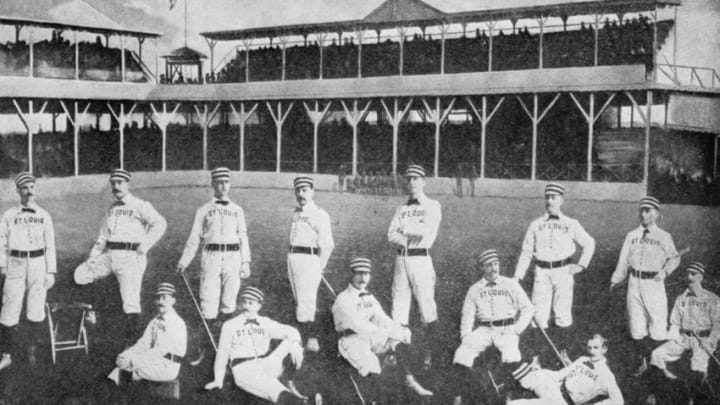Until the Tampa Bay Rays began threatening to finish 162-0 this season, it’s safe to say that almost nobody had heard of the St. Louis Maroons. Yet suddenly the Maroons are becoming celebrities.
St. Louis is famous, obviously, for the Cardinals. Old-timers may even recall the Browns, who played in St. Louis in the 19th century and again from 1901 until moving to Baltimore and becoming the Orioles in 1954.
Indeed, in 1884, the St. Louis Browns were a developing powerhouse in the American Association. They would win Association pennants annually from1885 through 1888.
But the St. Louis Maroons? That’s very much a team of a different and obscure color, brought back to life through the Tampa Bay Rays winning streak.
Although they hold the all-time record 20-game season-opening win streak, there’s excellent reason to dismiss the Maroons as a fluke.
The biggest black mark against the Maroons is that they played in an obscure 19th century league called the Union Association. It was founded by a St. Louisan named Henry Lucas after his bid for membership in the National League was rejected.
Having established both the league and his own team, Lucas proceeded to stock the Maroons with the best available players. Two inevitable results followed: The Maroons opened with those 20 straight wins and breezed to the pennant, and the resulting utter lack of competitiveness caused the Union Association to collapse at season’s end.
The Maroons finished with a record of 94 wins and 19 defeats, an .832 percentage that technically is also an all-time record, at least to the extent the Union Association is treated as a serious Major League. Historians are at odds on that point, but the fact that the Maroons’ 20-game opening win streak is even being mentioned these days provides proof that some do take the team’s records seriously.
Others dismiss the Union Association. They note not only that it folded after one season, but that Lucas had an obvious conflict of interest in simultaneously presiding over the league and owning its best team. It’s also true that several of the Union’s teams went broke after a mere handful of games, causing schedule makers to more or less make things up as they went along.
About those 20 straight wins … the Maroons began play April 20 with a 7-4 victory over a team representing Chicago that would in a couple of months relocate to Pittsburgh. An eight-game home-and-home with Altoona followed, then four victories over a team from Washington four more over Baltimore, and three over a representative team from Boston.
The streak finally ended when the Boston Reds won an 8-1 decision on May 24. It may be noteworthy that all but four of those 20 victories came on the Maroons’ home field.
During the 20-game win streak, the Maroons outscored their opponents 234-67, an average final score of 11.7 to 3.3.
When the Union Association folded, Lucas appealed again to the NL for membership, and this time his Maroons were accepted. They took the field in 1885 full of hope and energy…and promptly found out the difference between play in his Union Association and the National League.
From 94-19 in 1884, their record plummeted to 36-72-3 against their new competition in 1885. They went 43-79-4 in 1886 before Lucas gave up the ghost, selling his assets to a new team located in Indianapolis.
That left St. Louis with only the American Association’s Browns, who would join the NL when the two major leagues merged in 1892 and within the decade become reflagged as the Cardinals. A second iteration of the Browns would be born with the rival American League a few years later.
In short, it’s fair to say that the two greatest years in the history of the long-forgotten St. Louis Maroons were 1884 (when they dominated a league their owner created) and 2023, when the Tampa Bay Rays inadvertently reawakened their ghosts.
